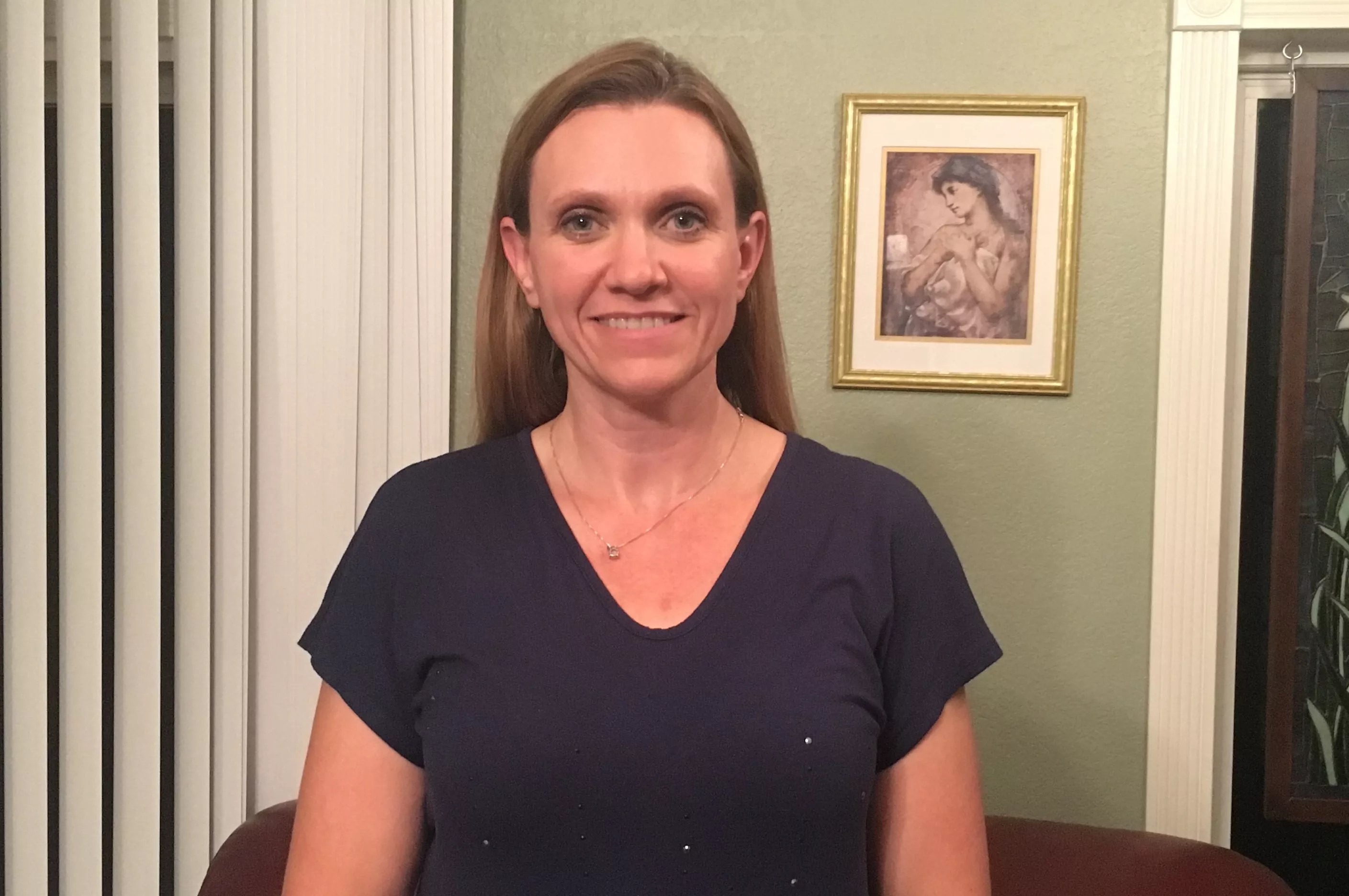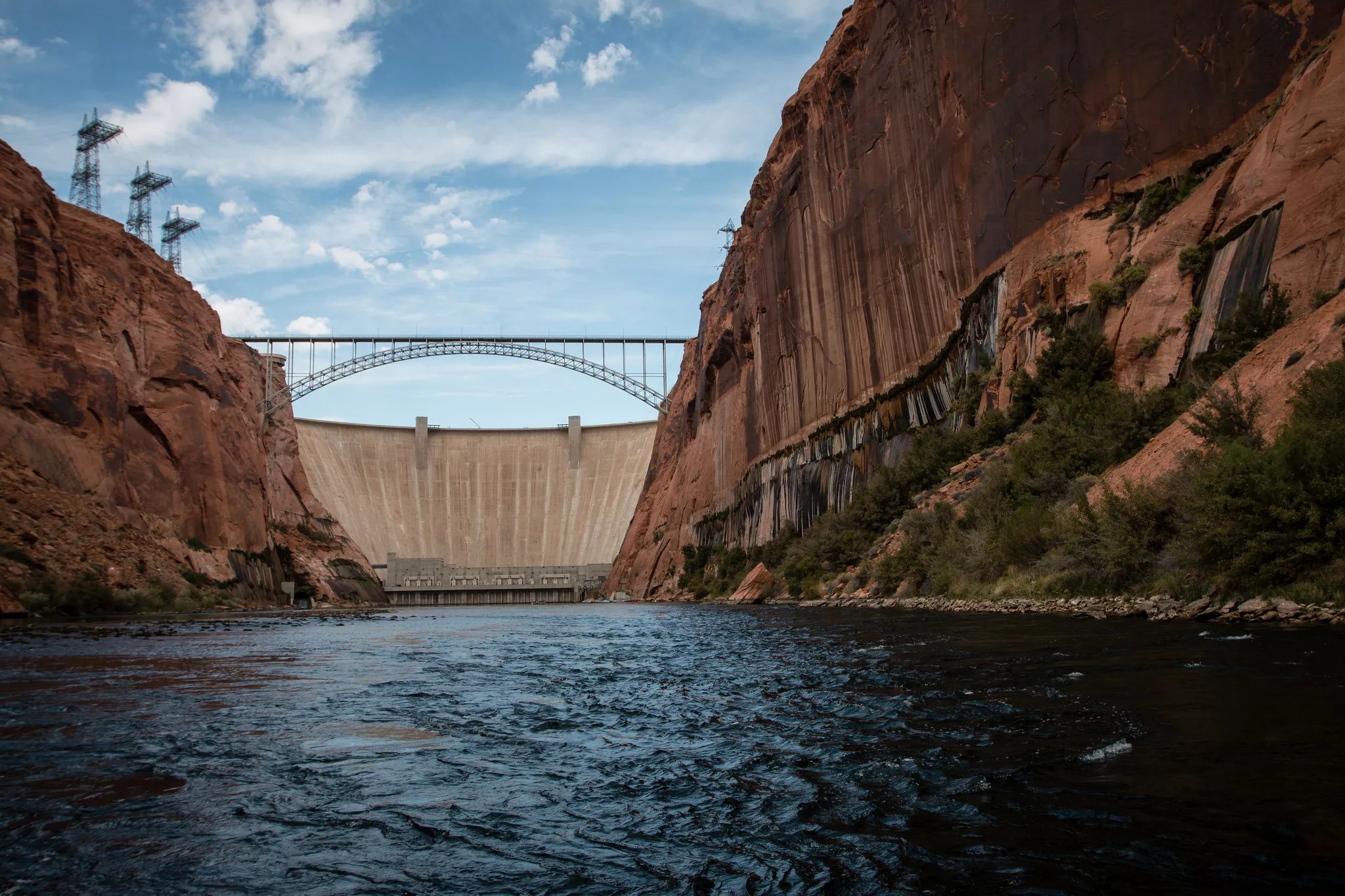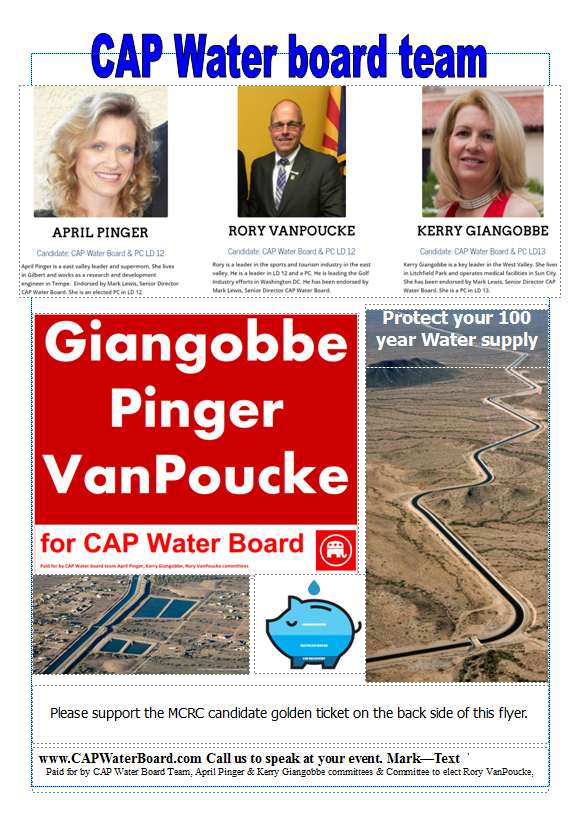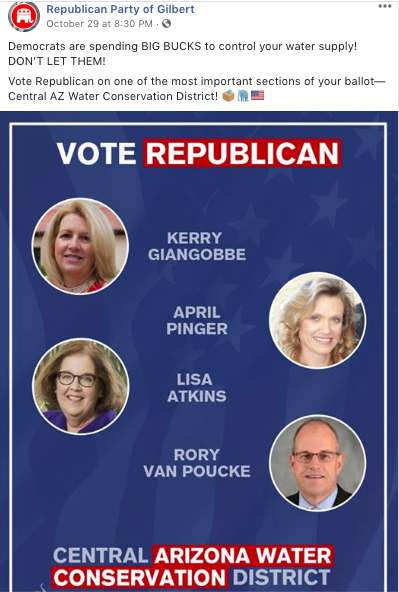
Elizabeth Whitman/Phoenix New Times

Audio By Carbonatix
Update, 12:15 p.m., November 20: After Maricopa County finished processing ballots, unofficial results show that April Pinger won the fifth seat on the CAWCD board by 660 votes.
Update, 5:45 p.m., November 12: With the latest ballot drop, April Pinger has maintained her lead over Alan Dulaney. She is now up by 1,674 votes. Maricopa has about 143,000 ballots left to process.
Update, 4 p.m., November 11: As Maricopa County continues to process ballots, April Pinger’s lead over Alan Dulaney, the candidate in sixth place, has dwindled to about 3,500 votes – up from roughly 12,000 on Thursday, when we published this story. As of Saturday night, Maricopa County still had about 198,000 ballots to process. It is possible that Dulaney could overtake Pinger for the fifth seat on the CAWCD board, in which case Pinger would not be the fifth electee. Please check back for updates.
We regret the error in our failure to include this vital information in the original version of the story, which is below:
April Pinger, an engineer with no background in water policy who spent less than $1,700 on her campaign, came seemingly out of nowhere Tuesday to win the fifth of five open seats on the Central Arizona Project board.
In winning, Pinger edged out a longtime water policy administrator for the city of Peoria, hydrogeologist Alan Dulaney. Maricopa County voters also re-elected three incumbents – Lisa Atkins, Terry Goddard, and Heather Macre – and voted in Jennifer Martin, an expert on water issues for the Sierra Club.
“It’s just an interest,” Pinger said Wednesday night during an interview at her home in Gilbert, when asked about her background in water policy.
“Gardening has been an interest of mine forever, so I’m familiar with trying to get different watering systems to work,” she added. “In terms of how the water was managed, I learned a little bit of it in history at school, and just found it fascinating that, as the phrase goes, whiskey is for drinking, water is for fighting.”
“It’s just an interest. Gardening has been an interest of mine forever.” — April Pinger, newly elected to the CAP water board
Pinger said she ran for the seat because Mark Lewis, who has held a seat on the CAP board for 20 years, asked her to.
“He’s one of the more conservative members of the board, and so he was looking for people who had conservative principles who would be willing to serve on the board with him,” she said.
The CAP board, at least nominally, is nonpartisan, yet the Republican Party played a major role in Pinger’s campaign. She ran on a slate with two other Republican candidates, Rory Van Poucke and Kerry Giangobbe, and was supported by numerous local Republican clubs. Lewis ran their campaign, she said. Lewis was the sole dissenting vote among CAP board members in 2017 on a legislative bill to make the CAWCD partisan.
In this election, 14 candidates were vying for five open Maricopa County seats on the board, which also has representatives from Pima and Pinal counties. This oft-overlooked body, sometimes referred to as the board of the Central Arizona Water Conservation District, or CAWCD, has significant influence on the future of water in Arizona.
Serving on it requires considerable understanding of water policy and politics.
The CAP’s 336-mile canal transports Colorado River water from Lake Mead to Maricopa, Pima, and Pinal counties. Its board is charged with repaying the federal government $1.65 billion in loans for the construction and maintenance of that canal; to do so, it is authorized to levy two property taxes. The board also sets groundwater policies that directly affect development.
The board plays a critical role in Arizona’s Drought Contingency Plan, a blueprint for dealing with a potential drought on the Colorado River, which has a roughly 50/50 chance of happening in 2020. Negotiators are racing to meet an end-of-November deadline to develop a plan, which board members will have to approve in order for it to proceed.

The Glen Canyon Dam on the Colorado River.
Arizona is part of a multistate effort to address the looming drought and resulting shortages. Its own internal drought plan will dictate which Arizona water users take cuts in the event of a drought, and how much. These talks are ongoing, and they are highly contentious.
In an interview with Phoenix New Times, Pinger paused for a long time (23 seconds passed on the recorder) before answering a question about the job description of a CAP board member: “To act as the negotiator in making sure that water is distributed fairly and that the water supply is protected for future generations.”
Pressed for more detail, Pinger said, “I don’t know if I necessarily know everything that’s under the jurisdiction of the CAP board, but I’m aware of the Colorado River, the Navajo Generating Station, some of those issues that are going on.”
She later added, “Like with anything, I feel there’s going to be a little bit of a learning curve. I feel like I have a good mentor in Mark Lewis.” She expected him to “show me the ropes in terms of procedure.”
Given that Pinger ran after Lewis approached her, and that her understanding of her new position is limited at best, whether she would simply be an echo of him on the board remains to be seen. Lewis did not respond to an email requesting comment for this story.
She said she had been following drought negotiations and that she had downloaded and “read through” the presentation from the last public meeting, in October.
One of the more explosive points during that meeting was the agricultural mitigation pool, a supply of water that farmers are requesting in order to compensate for cuts they are slated to receive under a Drought Contingency Plan.

Pinger estimated that 5,000 of these fliers were distributed during her, Giangobbe’s and Van Poucke’s campaign.
Courtesy of April Pinger
Pinger was not able to define the ag mitigation pool or provide her perspective on it. “There’s been a number of contentious things,” she said, when asked.
Half a minute passed, in silence.
“I think there’s a lot of jumping the gun …” she said, trailing off into silence again, before finishing, “… in terms of how we’re dealing with the other states.”
Pinger is a research and development engineer who has worked at Honeywell, an aviation manufacturer, for about two years and had her own consultancy for about six. She said that she hoped to bring technical expertise to the board.
“I’ve worked a lot in the areas of flow, pumps, valves, blowers, that type of thing. So I’m familiar with the mechanics,” Pinger said. “I know they do have discussions on the efficiency of pumping water uphill.”
Throughout the campaign season, Pinger appeared to have little mainstream presence, at least online. She had no individual website, and her profiles on Facebook, Twitter, and LinkedIn did not mention her candidacy. She was one of three candidates who did not fill out a questionnaire for the Arizona Republic’s 2018 Voters Guide. The other 11 did.
Records suggest a minimalist, hastily organized bid for a nonpartisan seat that ultimately succeeded thanks to steady support from the Republican Party.
Campaign filings from August registered the committee name “CAP Water Board Team April Pinger.” An early version of that paperwork listed a website, pingerforCAPboard.com, as its email address; an amended version lists a real email address.
“Trying to fill out the form too fast,” Pinger said, looking over printed copies of both those filings.
The only campaign finance filings on the Arizona Secretary of State’s site for Pinger show a single donation made to her in June, for $20. That was two months before she filed her candidacy with the Maricopa County Recorder’s office.
The two campaign finance reports filed with Maricopa County show that Pinger’s campaign spent $1,679.58 through October 28. Not a bad return, given that she won more than 200,000 votes. These records show that she spent most of that on “operating expenses.”
This amount is far less than what other candidates spent campaigning. Macre spent more than $27,000 on her re-election, for instance. Dulaney, who came in sixth, spent more than $6,400. EDF Action, the political advocacy arm of the Environmental Defense Fund, poured more than $285,000 into the race to support its four preferred candidates, one of whom did not win.

A screenshot of a pre-election Facebook post by the Gilbert Republican Party.
Gilbert Republican Party/Facebook
After Pinger was elected, Arizona Republic columnist Joanna Allhands branded her “a complete mystery.” New Times had reached a similar conclusion prior to the election while putting together a guide for voters on the CAWCD board candidates.
“I guess it depends on where you were looking,” Pinger said. “What I did was a lot more face-to-face.”
For the last four years, Pinger has been a precinct committeeman for the Republican party in Legislative District 12, where she is also the party’s treasurer. Precinct committeemen are officials elected to the party committee of each legislative district.
In campaigning, she knocked on “hundreds” of doors, but the biggest factor in her win, she said, were the legislative district meetings in the East Valley – Ahwatukee, Chandler, Gilbert, Mesa – that she attended. She estimated that from 50 to 200 people attended those.
“I’d get a chance to speak to the whole group and talk to them individually there,” Pinger said. She also attended meetings at Republican clubs and women’s Republican clubs, she said. She would hand out fliers with her name, Giangobbe’s and Van Poucke’s, and their photos.
She passed out the same fliers when she knocked on doors. In total, Pinger estimated, they printed and handed out 5,000 fliers. They also bought 150 red-and-white signs, 4 feet by 4 feet, and put them near various freeways. They put up a website, too, that supplies no information about their platforms or qualifications.
“We didn’t do mailers,” she said. “Mailers tend to be rather expensive.”
They were also on the 2018 Voters’ Guide for the Maricopa County Republicans Club. “They call it the Golden Ticket,” she said. “Those got passed out to probably just about every Republican in Maricopa County.”
Pinger’s name appeared on candidate lists for several Republican committee websites, including LD17, and LD18, and Facebook pages for local Republican parties.
Although Pinger ran jointly with Giangobbe and Van Poucke, she won nearly twice as many votes as each of them.
“Honestly, because we all ran on a slate, I’m a little confused at the disparity,” Pinger said, suggesting that it might have been because she knew more legislative district chairmen. Beyond that, she said, “I don’t really have a thorough explanation.”